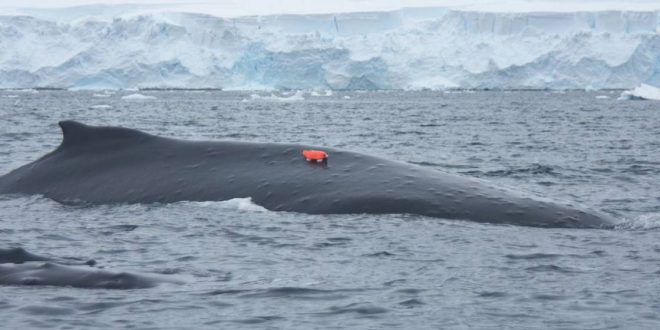Researchers have attached cameras to whales to unlock the mysteries of their life in Antarctica… and it is revealing a bonanza of information.
The Australian Antarctic Division said electronic tags with cameras and motion sensors were being placed on humpback whales off the Antarctic Peninsula in the Gerlache Strait.
The tags were being attached via suction cups on the giant mammals, where they would last for about 24 hours and then fall off to be retrieved by scientists. The three-dimensional sensors would monitor movement as well as the whale’s time and depth as they dived for food. Long-term ‘LIMPET’ tags were being attached to minke whales who would tracked via satellites over a two month period.
The researchers, from both the AAD and Oregon State University in the United States, aimed to illuminate their feeding habits amid changes in krill population from climate change, commercial fishing and ocean acidification.
“This work is part of a long-term ecological research to better understand the divergent impacts of climate change on the ice-dependent minke whales and more open-water humpback whales in this part of the Antarctic,” whale scientist Dr Elanor Bell said.
The video shows scientists attaching the tags to the mammals, as well as footage from the perspective of the whales. Credit: Australian Antarctic Division via Storyful
Agencies/Canadajournal
 Canada Journal – News of the World Articles and videos to bring you the biggest Canadian news stories from across the country every day
Canada Journal – News of the World Articles and videos to bring you the biggest Canadian news stories from across the country every day



